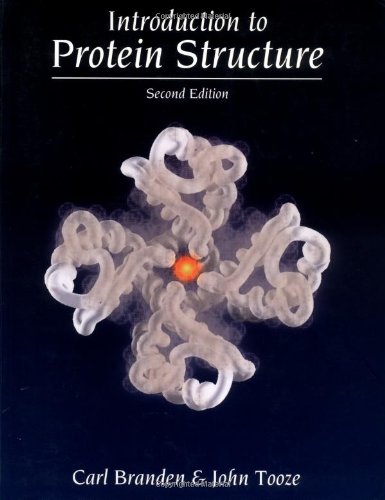Introduction to Protein Structure download
Par phelan carisa le samedi, juin 18 2016, 23:27 - Lien permanent
Introduction to Protein Structure. Carl Branden, John Tooze

Introduction.to.Protein.Structure.pdf
ISBN: 0815323050,9780815323051 | 415 pages | 11 Mb

Introduction to Protein Structure Carl Branden, John Tooze
Publisher: Taylor & Francis
The text given, “Introduction to Protein Structure” from Branden and Tooze explains the basic principles of protein structure. Approximating additive metrics. Most insect species are reliant on chemical communication to locate friends and foes, food sources, oviposition sites, etc. Hi everyone, this is a shorter post about a glance at proteins – most of the information came from my notes and Timberlake's book which is referenced down the bottom. Proteomics: From Protein Sequence to Function by S. Introduction to Protein Structure by Carl-Ivar Branden, John Tooze 2. Proteins are prompted to form crystals under the appropriate conditions. At the first chapter introduces the biochemical description of proteins. And applications of Microrrays analysis and gene expression while Dr. Reconstruction of additive trees. Proteins, The Structure and Function, An Introduction. Ward Smith and Peter Preusch introduce the 'Best of PSI-2' series of articles highlighting the achievements of the Protein Structure Initiative 2005-2010. The secondary structure - the identification of regular elements - occurs via regular H-bonding. Natasha Khuri will introduce structural modeling and dynamics of proteins and their application in the challenging and promising fields of computational drug screening. Proteomics & Structural Bioinformatics Books 1. A better understanding of the structural biology of olfactory proteins may pave the way for the development of environmentally-friendly mosquito attractants and repellents, which may ultimately contribute to reduction of mosquito biting and Introduction. Explore proteins and this website. Once these crystals are large enough will be used for solving the structure. Amino acids are covalently bonded into a peptide chain. The (interdependent) structural and evolutionary definitions of protein domains given above have been used to produce systematic hierarchical taxonomies of domains that combine information about shapes, functions and sequences [10,11].